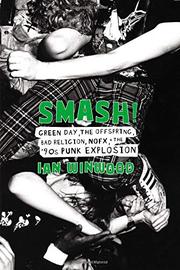

SMASH!
Green Day, the Offspring, Bad Religion, NOFX, and the '90s Punk Explosion
by Ian Winwood
Straightforward account of the improbably profitable second coming of punk rock.
British music journalist Winwood (co-author: Into the Black: The Inside Story of Metallica (1991-2014), 2014, etc.) writes with authoritative enthusiasm about the 1990s rise of bands like Green Day and the Offspring and their broader relationship to the always-contentious question, “what is punk?” He argues that since their success, “anyone forming a punk band did so with the knowledge that in doing so it was possible to become suddenly wealthy.” Setting up this improbable cultural watershed, the author briefly covers the initial blast of 1970s and ’80s punk, when powerful bands like Black Flag and the Germs had momentum cut short by police hostility, drug abuse, and changing underground rock trends. So, when bands like Los Angeles’ initially mediocre NOFX and the Bay Area’s beloved Operation Ivy (which morphed into Rancid) and juvenile upstarts Green Day formed, they had little expectation of mainstream success despite the signing explosion following Nirvana’s breakthrough in 1991. As NOFX’s Fat Mike recalls of those lean days, “It was fine because we didn’t know any different and no one bitched about it.” Still, the hardy pre-internet infrastructure of small labels, regional fanzines, and college radio meant that bands could tour and release records, improving their chops beneath the mainstream radar. This was epitomized by Bad Religion co-founder Brett Gurewitz’s Epitaph Records, eventually hugely influential but run on a shoestring during the years when, as band mate Greg Graffin recalls, “the punk scene was completely dismantled.” All this had started to change when Green Day’s commercial breakthrough, “Dookie,” catapulted them into the mainstream, bringing mass attention to the reconstituted punk genre. Winwood captures the halcyon days that followed, which included huge tours, Epitaph’s lucrative prominence, and Green Day’s later triumph with “American Idiot.” Focusing on the personalities behind these epochal bands, the author stays more on the surface than other recent assessments, but his knowing humor will appeal to younger fans and those who were there.
A savvy reminiscence of the era when punk finally paid its debt to society.